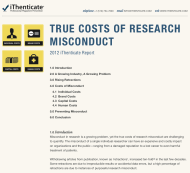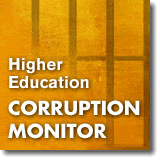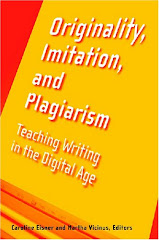Retractions are a scientist's worst nightmare. In the last 10 years, at least 788 scientific papers have been pulled from the literature, according to a study published this year in the Journal of Medical Ethics. Whether it is a result of research misconduct, duplicate publication, or simply sloppy data analysis, a retracted paper can devastate a scientist's research, or even impact a whole scientific field.
December 17, 2010
Top retractions of 2010 - The Scientist - Magazine of the Life Sciences
Retractions are a scientist's worst nightmare. In the last 10 years, at least 788 scientific papers have been pulled from the literature, according to a study published this year in the Journal of Medical Ethics. Whether it is a result of research misconduct, duplicate publication, or simply sloppy data analysis, a retracted paper can devastate a scientist's research, or even impact a whole scientific field.
December 8, 2010
Self-plagiarism case prompts calls for agencies to tighten rules - SCIENTIFIC AMERICAN
Eugenie Samuel Reich - Nature 468, 745 (2010)
Is plagiarism a sin if the duplicated material is one's own? Self-plagiarism may seem a smaller infraction than stealing another author's work, but the practice is under increasing scrutiny, as the eruption two weeks ago of a long-standing controversy at Queen's University in Kingston, Canada, makes clear.
Colleagues of Reginald Smith, an emeritus professor of mechanical and materials engineering at Queen's, say that up to 20 of Smith's papers contain material copied without acknowledgment from previous publications. University officials first learned of the duplications in 2005, and they eventually led to an investigation by the Natural Sciences and Engineering Research Council (NSERC), which funded some of Smith's work, including experiments on board the U.S. space shuttles. Although Smith avoided censure for research misconduct, three papers were subsequently retracted by the Annals of the New York Academy of Sciences and one by the Journal of Materials Processing Technology. The situation was recently made public in news reports and has led to calls for stronger powers by funding agencies in Canada to discipline researchers who engage in the practice.
"He was a very good scientist, but something happened and he got into this business of duplicating papers," says Chris Pickles, a metallurgist at Queen's who raised concerns about Smith's publication practices after spotting some duplications under Smith's name while searching an online database. Smith referred a request for comment to his lawyer, Ken Clark of law firm Aird and Berlis in Toronto, Canada, who notes that many of the republications duplicated material from conference proceedings, which in an earlier epoch would not usually have been published. He also notes that Smith is retired, and does not stand to gain financially from his republications.
Many researchers say that republication without citation violates the premise that each scientific paper should be an original contribution. It can also serve to falsely inflate a researcher's CV by suggesting a higher level of productivity. And although the repetition of the methods section of a paper is not necessarily considered inappropriate by the scientific community, "we would expect that results, discussion and the abstract present novel results," says Harold Garner, a bioinformatician at Virginia Polytechnic Institute and State University in Blacksburg. Garner's research group used an automated software tool to check the biomedical literature for duplicated text, and identified more than 79,000 pairs of article abstracts and titles containing duplicated wording. He says work on the database of partly duplicated articles--called Déjà vu--has led to close to 100 retractions by journal editors who found the reuse improper. An analysis by Garner in the press at Urologic Oncology shows that while the total quantity of biomedical literature has risen steadily since 2000, cases of republication stopped rising after 2003 and fell sharply between 2006 and 2008 (see graph). "It actually does look like it's getting better," says Garner. "People who would ordinarily step across the line are not doing it."
He credits increased vigilance by journal editors who are using his free tool or commercially available software to check submissions for repeated text and halt dubious papers before they reach publication.
NSERC's policy on integrity in research makes no specific reference to plagiarism or self-plagiarism, which has led to calls for tougher rules in the wake of the publicity over Smith's case. In the United States, the National Science Foundation (NSF) takes a strong stance on plagiarism in general, says Christine Boesz, who was inspector-general at the NSF from 1999 until 2008. "The NSF got into the plagiarism game early," she says. Numbers obtained by Nature under the US Freedom of Information Act show that, since 2007, the agency has found between 5 and 13 cases of plagiarism each year. In contrast, the U.S. Department of Health and Human Services's Office of Research Integrity (ORI), which is responsible for overseeing alleged plagiarism associated with National Institutes of Health research, has reported no cases of plagiarism of text over the past three years, but has found up to 14 scientists a year guilty of falsification or fabrication of data (see Table 1).
Ann Bradley, a spokeswoman for the ORI, says the office's working definition of plagiarism excludes minor cases. Nick Steneck, director of research ethics and integrity at the University of Michigan in Ann Arbor, says authorities worldwide should adopt a uniform misconduct policy that provides clear guidance not only on data falsification and fabrication but also on lesser ethical breaches--such as self-plagiarism.
Random Posts
Popular Posts
-
This guest post is from Kayhan Kantarlı, a retired professor of physics from the University of Ege in Turkey. He published a first versio...
-
Jeffrey Beall This is a list of questionable, scholarly open-access publishers. I recommend that scholars not do any business with these pu...
-
The Yomiuri Shimbun Turkish national Serkan Anilir, recently stripped of the doctorate he obtained from the University of Tokyo over plagiar...
-
Richard Knox Many online journals are ready to publish bad research in exchange for a credit card number. That's the conclusion o...
-
When Robert Barbato of the E. Philip Saunders College of Business at Rochester Institute of Technology (RIT) heard he was being accused of p...







